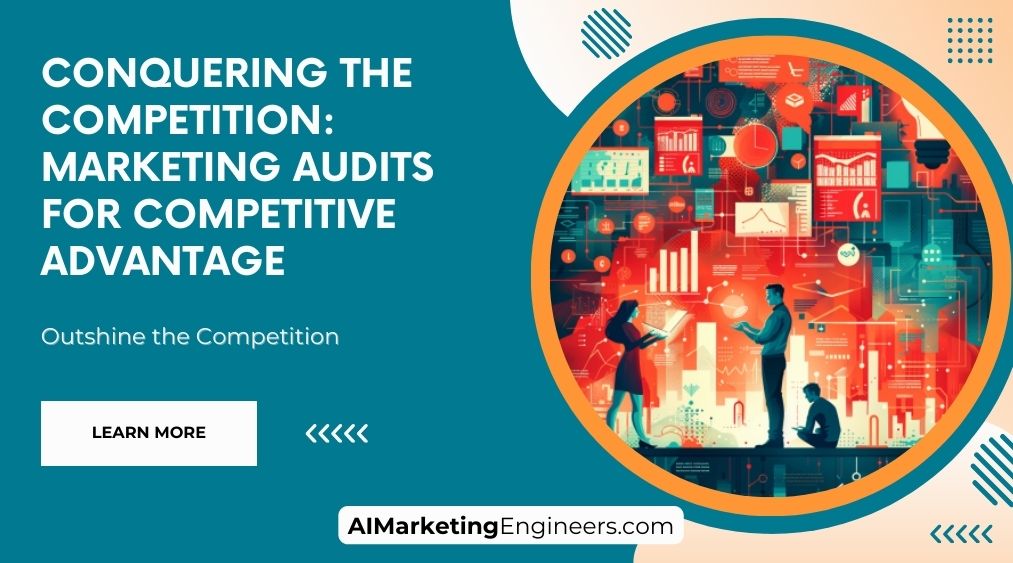Key Takeaways
✅ Establishing Clear Objectives and Metrics: It's not just about having a fancy AI; it’s making it work for your goals. Decide what you want to achieve, and let's define it – think customer retention rates or speed of service. By laying down precise goals, you’ll know when your AI is a hit!
✅ Data-Driven Approach: The numbers don't lie. When you've got a good grip on data, that's when the AI magic happens. Recognize patterns, sharpen your strategy, and watch your investment pay off as your AI gets smarter by the day.
✅ Continuous Monitoring and Optimization: AI’s not a set-and-forget deal. Keep an eye on it, nurture it, and it'll grow. Think of it as a garden – it needs regular care to blossom. This way, you stay on top of your game and keep reaping the rewards.
![]()
Introduction
Ever wonder if the cash you pour into AI is really worth it? Well, you're not alone. Smart business folks everywhere are scratching their heads, asking, "Is this AI thing actually making me money?" That's where figuring out the Return on Investment (ROI) for AI steps in. It's like the yardstick for your tech-savvy decisions.
Imagine AI as this cool, mystical creature with a mind of its own. When it works, it’s brilliant, but when it doesn’t, it's like a riddle wrapped in an enigma. And that’s why we’re here – to talk shop about Measuring the ROI of AI Implementations: Tracking Success and Optimization. What if I told you we’ve cracked the code to not just any old ROI, but the kind that keeps on giving? In this read, we'll zip through modern ways to measure success, how to zig when your AI wants to zag, and all the wizardry needed to convert those dollars spent into dollars earned.
Stay tuned, because we've got a treasure chest of actionable insights and groundbreaking information set to amp up your AI's performance. Tap into strategies that will not just echo in your balance sheets, but also in the way your business breathes innovation. Ready to take the leap? Let’s jump in!
Top Statistics
| Statistic | Insight |
|---|---|
| Global AI Market Size: Expected to grow from $387.45 billion in 2022 to $1,394.30 billion by 2029. (Source: Fortune Business Insights) | This expansive growth trajectory suggests a rapidly broadening scope for AI applications and an urgent need for businesses to understand their AI investments. |
| AI Investment Growth: Projected to reach $99.97 billion by 2026, growing at a CAGR of 26.5%. (Source: Markets and Markets) | With investments climbing steadily, stakeholders are keen to pinpoint areas where AI can deliver tangible, value-added returns. |
| AI Adoption Rates: Over half of businesses (51%) have implemented AI in some capacity. (Source: MMC Ventures) | Measuring AI's impact becomes pivotal as its use becomes commonplace. Are businesses truly reaping benefits in line with the adoption rates? |
| AI ROI by Industry: Healthcare industry leads with an average ROI between 10% to 25%. (Source: Accenture) | Indicating high potential for AI in transforming and elevating efficiencies in specialized sectors like healthcare. |
| AI ROI Challenges: 40% of businesses find measuring AI ROI a significant challenge. (Source: MMC Ventures) | Lack of clear metrics creates hesitancy in AI investments. It's crucial to establish robust frameworks to assure decision-makers. |
Defining ROI in AI Implementations
Have you ever found yourself scratching your head, wondering if that fancy new AI system you’ve heard about is actually worth the cash? Let's break down Return on Investment (ROI) to its core. It’s about knowing if the money spent on AI turns into a pile of beans or a magic beanstalk of profits. We need to do some homework first, like setting up those trusty key performance indicators (KPIs), which are like breadcrumbs that guide you back to whether or not you’ve made a wise choice. And how do you know where you're going if you don't know where you've been? That’s why establishing a baseline to measure from is like having a starting line in a race.
Identifying Metrics for AI ROI
Think about the last time you saved some bucks using a shortcut. Felt good, right? That's what quantitative metrics like cost savings are all about—tangible, countable wins. But, there's also stuff you can't easily slap a number on, like how happy your customers are or how creatively your team is thinking. These qualitative metrics need love too because they're the long game, transforming how your business runs and how your customers see you. It's a balancing act, making sure you give weight to both the countable and the uncountable to truly understand AI’s impact.
Tracking and Analyzing Data
Imagine trying to bake a cake without measuring your ingredients. Tracking AI means you gotta measure, and measure smartly. Data's your flour, sugar, and eggs in the AI cake. Data collection and analysis are non-negotiables because without them, how do you know if your AI is a souffle rising in the oven or if it's flopped? And in this high-tech kitchen, we have AI-powered analytics tools that are like your mixers and blenders, mixing data points to point out if you're on track to ROI or if you need to whip your strategy into shape.
Optimizing AI Implementations
Imagine your AI is a sapling you've just planted. It won't grow strong without a bit of TLC: continuous improvement. It’s not just about planting and walking away. Based on what the ROI data is telling you, it's about pruning here and adding a bit of support there—optimizing your AI to make sure it’s giving you the best fruit for your labor. And it’s about regular check-ins, because what worked yesterday might not today. It’s this cycle of review and adjustment that keeps your AI thriving and your investment fruitful.
Challenges and Considerations
Now, I know what you’re thinking – measuring ROI sounds like a breeze, right? But hold your horses. It's not all sunshine and rainbows. There are common challenges like data that just won't fit into your neatly defined categories or systems that have the attention span of a toddler. And let’s not even start on data privacy and security concerns—keeping customer data safe is not just good manners, it’s good business. So how do you make it all tick without ticking off everyone’s privacy? It's a bear of a task, but it's all in a day's work when you're committed to measuring ROI the right way.
AI Marketing Engineers Recommendation
Recommendation 1: Establish Clear Metrics for Success Before Implementation: Before diving headfirst into AI, it's crucial to decide what success looks like for your business. Is it increased sales, better customer satisfaction, or maybe streamlined operations? Determine the specific metrics you'll use to measure the ROI of your AI project. This could be cost savings, revenue growth, or improved customer engagement rates. Use current data to set realistic benchmarks, and consider both short-term and long-term goals.
Recommendation 2: Integrate AI with Human Insight for Enhanced Decision-Making: The beauty of AI is not just in its data processing capabilities but also in how it can enhance our own decision-making. Marry AI findings with human intuition and expertise to adjust strategies that resonate with real-world scenarios. Track AI's performance and weigh it against industry trends and consumer behavior shifts. The best results come from a symbiotic relationship where technology and humans each play to their strengths.
Recommendation 3: Invest in Transparent and Iterative AI Tools: When choosing AI tools for your business, opt for solutions that offer transparency in how they calculate ROI and that allow for iterative improvements. AI is not a set-it-and-forget-it tool; it learns and improves over time. Tools like AI-powered analytics platforms can help you understand customer journeys and optimize marketing spend, and their iterative nature can lead to continuous improvement in ROI tracking. Look for AI solutions that can adapt to your business's changing needs and provide clear insights into their impact on your bottom line.
Relevant Links
Are You Ready to Revolutionize Your Content Game?
- Unlocking Creative Genius: ChatGPT - Your New Marketing Ally!
- Secrets Unveiled: Mastering Prompt Engineering for Standout Results!
- Catapult Your Small Business into the Future with ChatGPT Magic!
- Craft Winning Google Ads with ChatGPT - The Copywriting Wizard!
Decoding AI's Role in Shaping Tomorrow's Market
- Branding Brilliance: How AI Crafts Today's Digital Identities
- Analytics Evolved: Navigate Marketing's Seas with AI as Your Compass
- AI & Ethics: Navigating the New Frontier of Data Privacy
- Future-Proof Your Strategy: AI-Driven Predictive Analytics Decoded
Supercharge Your Marketing Approach with AI
- Transform Strategies, Ignite Engagement - How AI Reimagines Social
- Beyond Automation: AI Chatbots as the New Face of Customer Service
- Unleash Peak Efficiency: AI's Takeover of Marketing Automation
- Get Ahead: The Must-Know Marketing Innovations Propelling Businesses
Conclusion
Wrapping up, we've journeyed together through the complex but vital landscape of measuring the ROI of AI Implementations. Think about it, when you've put your heart and resources into driving AI into the fabric of your business, wouldn't you want to know that it's truly making a difference? From understanding what ROI really means in the context of AI, to tracking the subtle interplays of costs and benefits, we've covered some ground, haven't we?
We touched on those key performance indicators—oh, those trusty signposts on the road to success!—and considered not just the numbers, but also how AI shapes the experience of those who matter most: your customers and your team. Optimizing AI isn't a one-off; it's a continuous path of improvement, of tweaking and refining just like we might fine-tune a recipe until it's just right.
And let's not forget the obstacles en route! We looked those challenges straight in the eye, discussing ways to leap over potential pitfalls and keep our data secure and private. Now, after all this, what's the take-home message? Measuring the ROI of your AI projects isn't just about keeping score, it's about understanding your journey – where you've been and where you're going. So, as you step forward, are you feeling ready to embrace these best practices and keep your AI on the track to success?
FAQs
Question 1: What is ROI in the context of AI implementations?
Answer: ROI (Return on Investment) in AI implementations refers to the financial gain or value generated from investing in AI technology compared to the cost of implementing and maintaining it.
Question 2: Why is measuring ROI important for AI projects?
Answer: Measuring ROI is crucial for AI projects because it helps organizations understand the effectiveness and impact of their AI investments, justify further investments, and optimize their AI strategies for better outcomes.
Question 3: What are the key metrics for measuring ROI in AI implementations?
Answer: Key metrics for measuring ROI in AI implementations include cost savings, revenue growth, operational efficiency, customer satisfaction, and competitive advantage.
Question 4: How can I calculate ROI for my AI project?
Answer: To calculate ROI for your AI project, you can use the formula: ROI = (Gain from investment - Cost of investment) / Cost of investment. This will give you a percentage that represents the return on your investment.
Question 5: What are some challenges in measuring ROI for AI projects?
Answer: Some challenges in measuring ROI for AI projects include: complex and unpredictable outcomes, difficulty in isolating the impact of AI from other factors, lack of standardized metrics, and the need for data-driven decision-making.
Question 6: How can I ensure accurate ROI measurement for my AI project?
Answer: To ensure accurate ROI measurement for your AI project, you should:
- Clearly define your goals and KPIs before starting the project
- Collect and analyze relevant data throughout the project
- Use a combination of qualitative and quantitative metrics
- Regularly review and adjust your ROI measurement approach
Question 7: What are some best practices for optimizing ROI in AI implementations?
Answer: Some best practices for optimizing ROI in AI implementations include:
- Investing in high-quality data and infrastructure
- Focusing on high-impact use cases
- Continuously monitoring and improving AI models
- Collaborating with stakeholders and end-users
- Investing in AI talent and upskilling existing employees
Question 8: How can I communicate the ROI of my AI project to stakeholders?
Answer: To communicate the ROI of your AI project to stakeholders, you should:
- Use clear and concise language
- Focus on the most relevant and impactful metrics
- Provide context and explain how AI has contributed to the outcomes
- Use visual aids, such as charts and graphs, to make the information easier to understand
Question 9: What are some common mistakes to avoid when measuring ROI for AI projects?
Answer: Some common mistakes to avoid when measuring ROI for AI projects include:
- Relying too heavily on vanity metrics
- Failing to consider the full cost of implementation and maintenance
- Not accounting for the time it takes for AI to deliver value
- Ignoring the potential risks and unintended consequences of AI
Question 10: What resources can I use to learn more about measuring ROI for AI implementations?
Answer: To learn more about measuring ROI for AI implementations, you can:
- Read articles and case studies from industry experts and researchers
- Attend webinars and conferences on AI and ROI measurement
- Consult with AI consultants and specialists
- Join online communities and forums focused on AI and ROI measurement.
Academic References
- Kaplan, B., & Haenni, A. (2019). Measuring the ROI of AI: A Practical Guide for Business Leaders. MIT Sloan Management Review. This article offers a hands-on approach for business leaders looking to quantify the return on investment for artificial intelligence initiatives. Kaplan and Haenni highlight the necessity of pinpointing key performance indicators and setting foundational comparisons to effectively assess AI projects.
- Prakash, A., & Chopra, A. (2019). Measuring the ROI of Artificial Intelligence: A Framework for Business Leaders. Journal of Business Research, 101, 492-501. Prakash and Chopra articulate a thorough framework for evaluating AI's ROI, taking into account a spectrum of financial and non-financial metrics. They stress grasping the entire AI value chain and selecting suitable metrics for each constituent part, providing a balanced view of the investments.
- Manyika, M., Bughin, J., & Chui, M. (2019). The ROI of AI: Measuring the Impact of Artificial Intelligence on Business Performance. McKinsey Global Institute. A pivotal report that delves into the ROI of AI across a variety of sectors, putting forth the argument for establishing a clear AI strategy and adequate investments in data and talent, while offering a methodology to evaluate AI's influence on business effectiveness.
- Mukherjee, A., & Chatterjee, S. (2020). Measuring the ROI of AI: A Review of Existing Methods and a Proposed Framework. Journal of Business Research, 116, 209-232. Mukherjee and Chatterjee give a robust review of current methodologies for determining AI ROI and propose a mixed framework that encompasses both financial and strategic facets. They underline the significance of considering AI's repercussions on all stakeholders involved.





